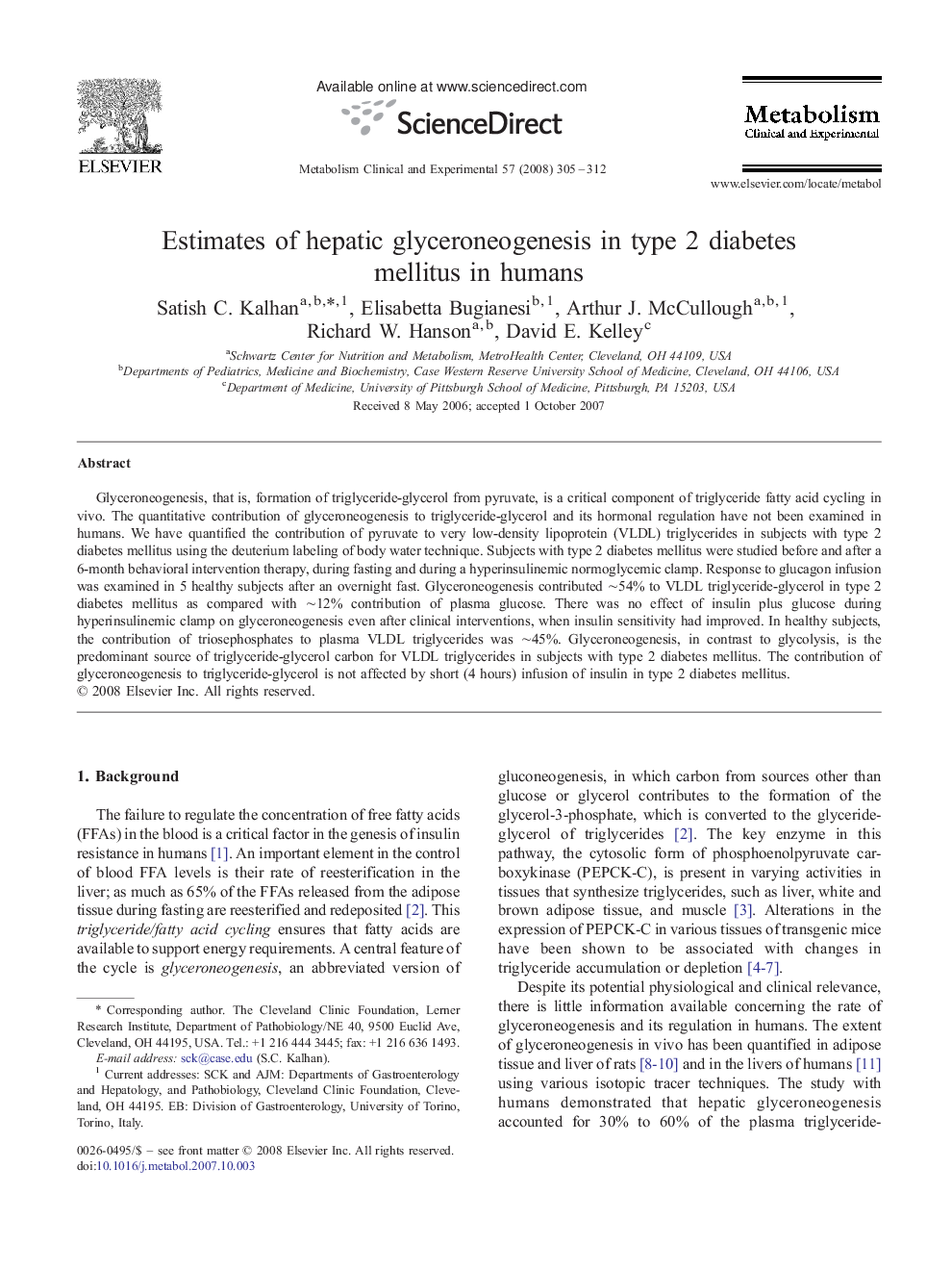| کد مقاله | کد نشریه | سال انتشار | مقاله انگلیسی | نسخه تمام متن |
|---|---|---|---|---|
| 2807217 | 1157153 | 2008 | 8 صفحه PDF | دانلود رایگان |
عنوان انگلیسی مقاله ISI
Estimates of hepatic glyceroneogenesis in type 2 diabetes mellitus in humans
دانلود مقاله + سفارش ترجمه
دانلود مقاله ISI انگلیسی
رایگان برای ایرانیان
موضوعات مرتبط
علوم زیستی و بیوفناوری
بیوشیمی، ژنتیک و زیست شناسی مولکولی
علوم غدد
پیش نمایش صفحه اول مقاله

چکیده انگلیسی
Glyceroneogenesis, that is, formation of triglyceride-glycerol from pyruvate, is a critical component of triglyceride fatty acid cycling in vivo. The quantitative contribution of glyceroneogenesis to triglyceride-glycerol and its hormonal regulation have not been examined in humans. We have quantified the contribution of pyruvate to very low-density lipoprotein (VLDL) triglycerides in subjects with type 2 diabetes mellitus using the deuterium labeling of body water technique. Subjects with type 2 diabetes mellitus were studied before and after a 6-month behavioral intervention therapy, during fasting and during a hyperinsulinemic normoglycemic clamp. Response to glucagon infusion was examined in 5 healthy subjects after an overnight fast. Glyceroneogenesis contributed â¼54% to VLDL triglyceride-glycerol in type 2 diabetes mellitus as compared with â¼12% contribution of plasma glucose. There was no effect of insulin plus glucose during hyperinsulinemic clamp on glyceroneogenesis even after clinical interventions, when insulin sensitivity had improved. In healthy subjects, the contribution of triosephosphates to plasma VLDL triglycerides was â¼45%. Glyceroneogenesis, in contrast to glycolysis, is the predominant source of triglyceride-glycerol carbon for VLDL triglycerides in subjects with type 2 diabetes mellitus. The contribution of glyceroneogenesis to triglyceride-glycerol is not affected by short (4 hours) infusion of insulin in type 2 diabetes mellitus.
ناشر
Database: Elsevier - ScienceDirect (ساینس دایرکت)
Journal: Metabolism - Volume 57, Issue 3, March 2008, Pages 305-312
Journal: Metabolism - Volume 57, Issue 3, March 2008, Pages 305-312
نویسندگان
Satish C. Kalhan, Elisabetta Bugianesi, Arthur J. McCullough, Richard W. Hanson, David E. Kelley,